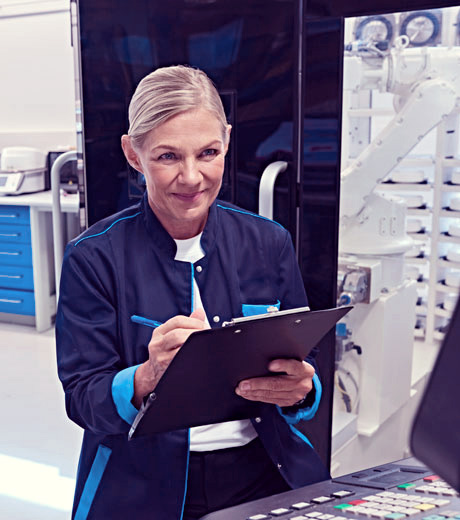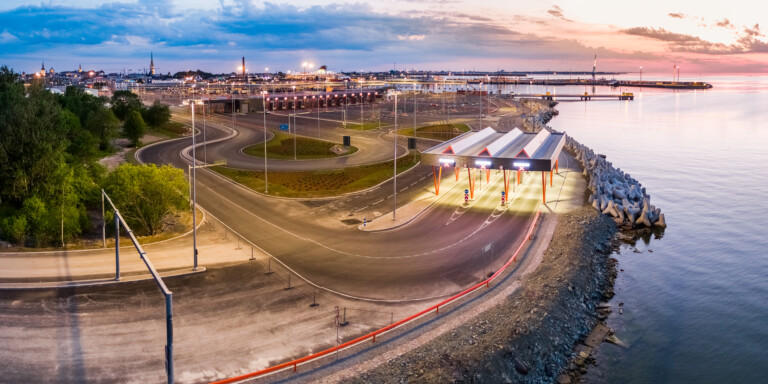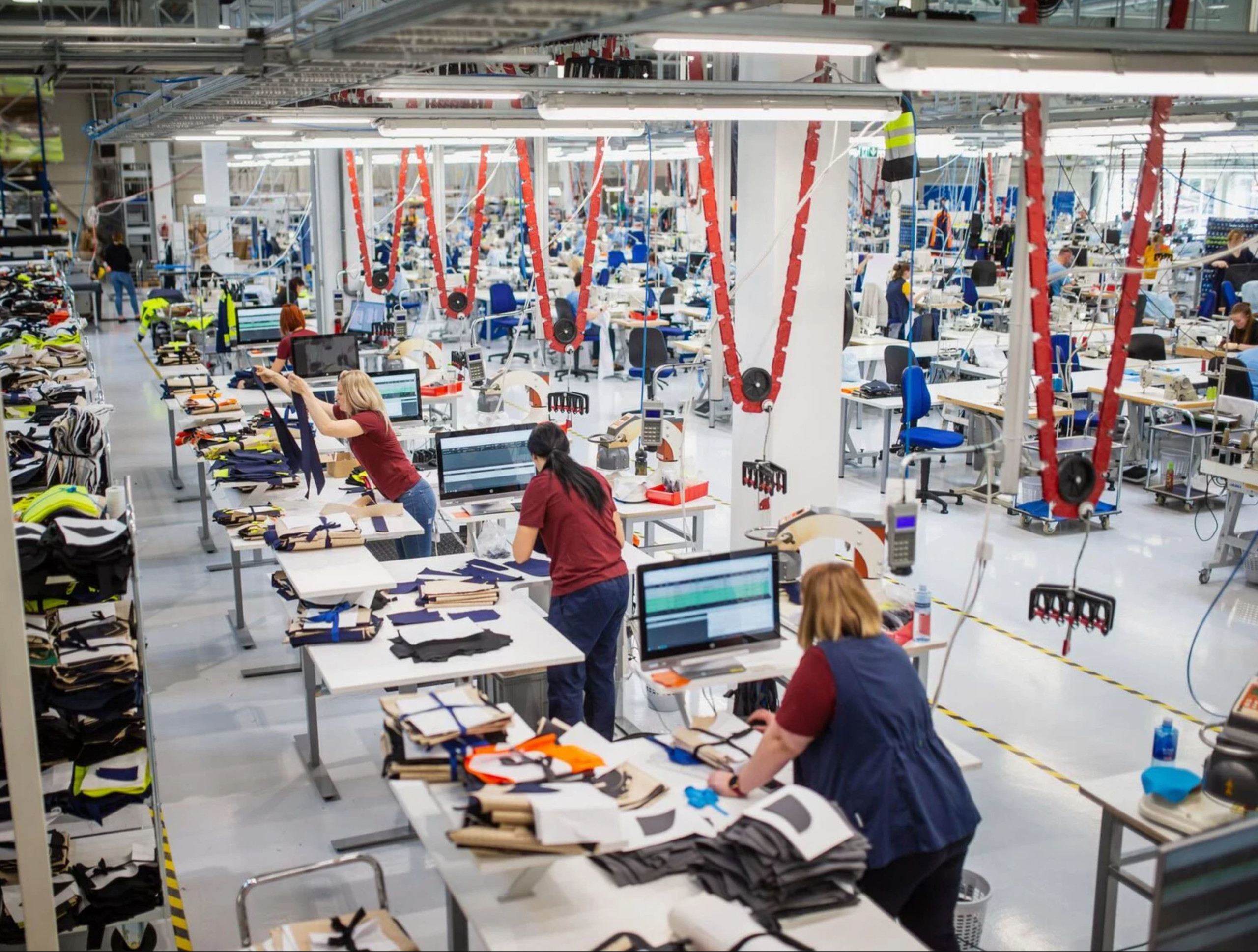
Case study
Lindström's productivity soars with a new cutting-edge solution
When a paint spill ruined Kevin’s workwear, his supervisor wasn’t worried. She knew that Lindström would get Kevin new gear, tailored to his specific needs, within a few days.
We helped Lindström get its garment manufacturing lead time from weeks down to one day. Even if the workwear is expected to be unique and tailored to the company’s brand.
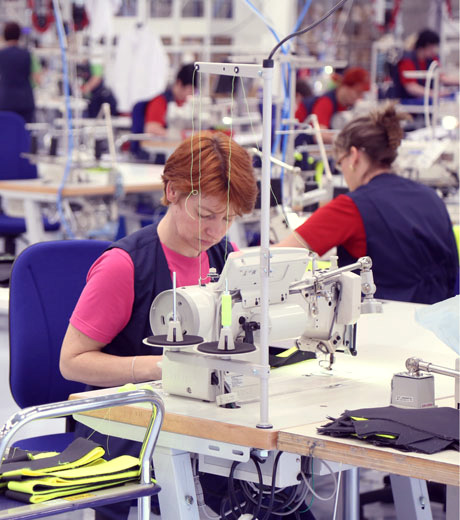
Challenge
Gone are the days where everybody wore the same dark blue overalls no matter the factory where they worked. Now, even workwear is expected to be unique and tailored to the company’s brand.
For Lindström, a leading textile service company in Europe and Asia, this trend meant the volume of purchase orders increased significantly, although production volume rose only modestly. In turn, this meant a considerable increase in the number of stock keeping units (SKU) and more complex production planning.
Production with short lead times
To offer shorter lead times and improve the customer experience, Lindström was setting up a new workwear manufacturing site in Latvia. The factory would follow the production-on-demand principle and had to be able to operate flexibly. It also required capabilities to automatically optimize the production plan and monitor production in detail and from afar.
Lindström also needed this new, lean production process set up in a way that could be duplicated at other production units.
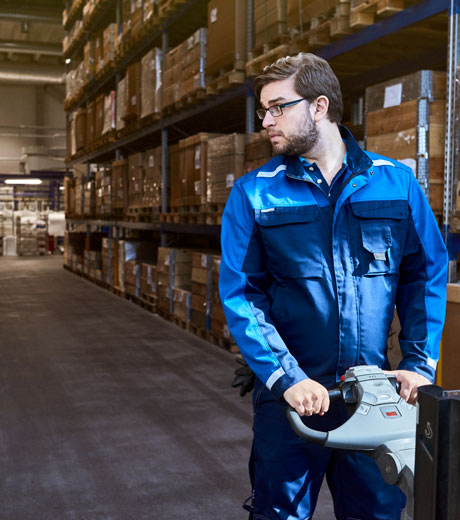

— Ergin Tuganay, Partner, Head of Data & IoT
Our solution supports a flexible and extensible approach to grow with Lindström’s business. We’re happy to see how it has already helped Lindström achieve higher productivity than the industry’s standards.
Solution
We were was happy to take on this challenge — and met it, with production processes up and running when the first orders came in. As a solution, we crafted Lindström a complete, integrated production planning, execution and tracking solution that manages the company’s production seamlessly.
Today, Lindström has a customer-driven process where garments are manufactured only on demand and just in time: an order from a customer is a signal to start cutting the fabric. Once the order arrives, automatic scheduling rules aid production planners by suggesting an optimal production plan for available capacity and several planning constraints. The plan will secure on-time delivery of every garment ordered from the factory.
We used a template-based modular platform approach deployed in cloud. In the future, it’s easy to apply the same system to similar production sites as very few changes and modifications are needed.
RFID to the rescue – all actions to be traced
On the shop floor, all the garments are labeled with radio frequency identification (RFID) tags and every movement is registered in the system for real-time tracking and progress reporting. Everything that happens in the factory — from traceability of the individual garment through production lines and cells to the order fulfillment — can also be monitored from Lindström’s HQ in Helsinki. The data collected from each garment’s RFID tag let Lindström monitor where in the production process a specific garment is, how much time different parts of the manufacturing take and when the garment should be ready for shipment. All the different systems supporting the daily business of running the production — product life cycle management (PLM), enterprise resource planning (ERP), advanced planning and scheduling (APS) and manufacturing execution (MES) — are interconnected and the information flows automatically.
Technology – ROB-EX makes detailed planning possible
To help automate production planning rules and provide a visual tool for planners, we used ROB-EX, a detailed production planning software. With ROB-EX, planners can automate complex planning tasks with minimal effort and simulate what-if scenarios to find the best plan. For production tracking and reporting, we worked with Lindström’s garment manufacturing specialists, production planners and factory operators to tailor a solution. This provided the best possible fit to the actual production process and the daily lives of cutting, sewing and packaging workers on the shop floor. The full solution was delivered integrating ROB-EX with standard Microsoft-components — SQL database, REST APIs, responsive HTML clients and Power BI reports — all delivered from Azure Cloud.

— Jarmo Vahtervuo, Business development and Lean Executive at Lindström
Similar operations have been built elsewhere in the world but for mass production. Building a factory like this for producing small batches is very unique. Without ROB-EX and Nortal, we would not be able to run a factory like this.
Impact
The impact of this project has been mind-blowing. Not only has the garment manufacturing lead time improved dramatically, but the factory in Latvia has considerably higher productivity than the clothing industry’s standard. Productivity is way above the expectations Lindström had at the start of the project.
We also enabled shorter lead times and fact-based decision making, which led to:
- Manufacturing lead time has dropped from weeks to just one day
- Production process and order fulfilment can be monitored in real time and even remotely from Helsinki
- Sensor and other data that are collected allow more accurate decision-making because it is based on facts and figures

— Jarmo Vahtervuo, Business development and Lean Executive at Lindström
Nortal's people are were good at grasping what is it that you actually need. With their help we managed to get a tool that truly serves our needs. Nortal was the key ingredient to make this project a true success story.
Creating amazing solutions for our customers
The timeline of the project was on the more challenging end — we had only a few of months to design, implement, test and deploy the solution. And the factory in Latvia was still being built, putting numerous unknown factors in play.
We are very proud to have helped Lindström bring garment manufacturing to the “Industrial IoT” era.
With automation and data-driven decision-making, our system has helped Lindström increase productivity and profitability. We’re more than happy to do the same for our other customers.

— Jarmo Vahtervuo, Business development and Lean Executive at Lindström
I'm very happy. I would absolutely recommend others work to with Nortal. The factory is performing way above our expectations. We had very tough targets and goals, and we've exceeded them all.
Discover your goldmine with Nortal solutions
Get in touch
Let us offer you a new perspective.
